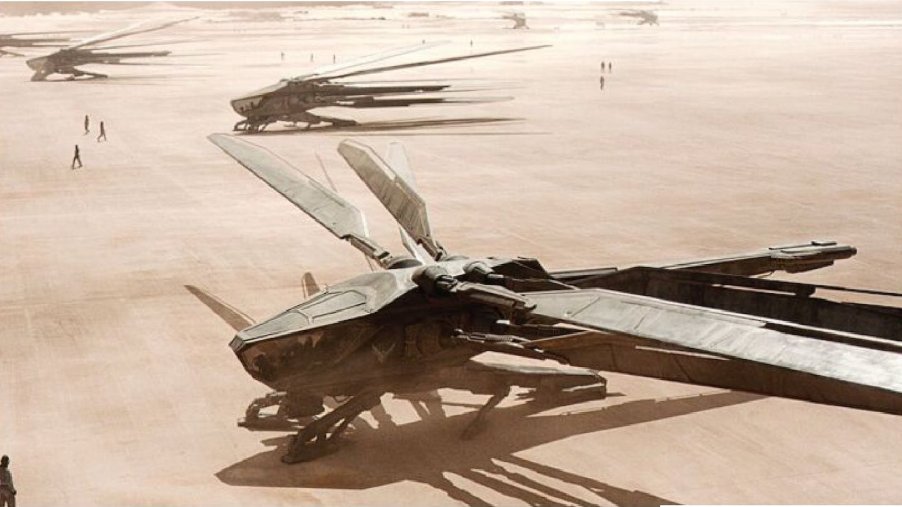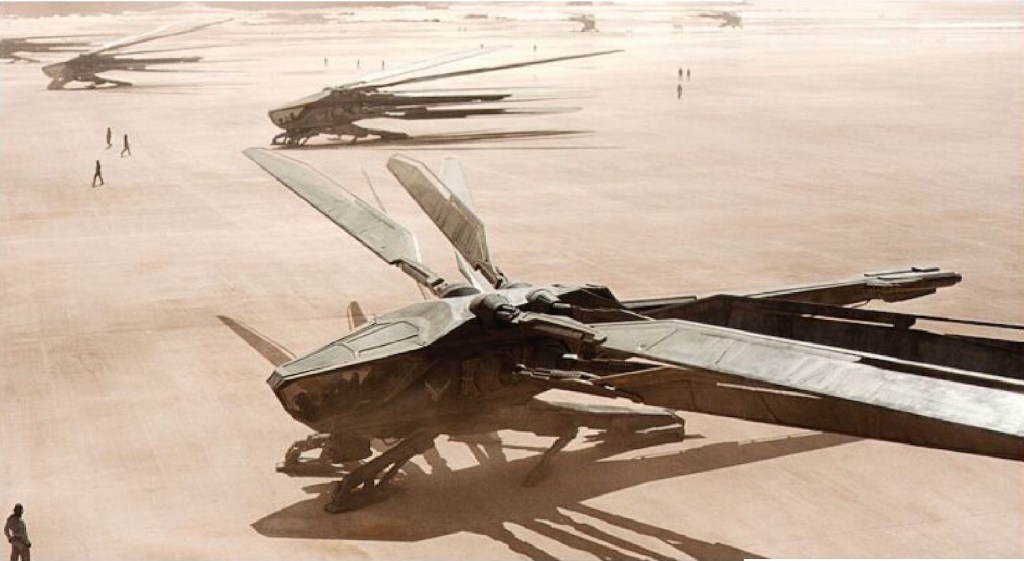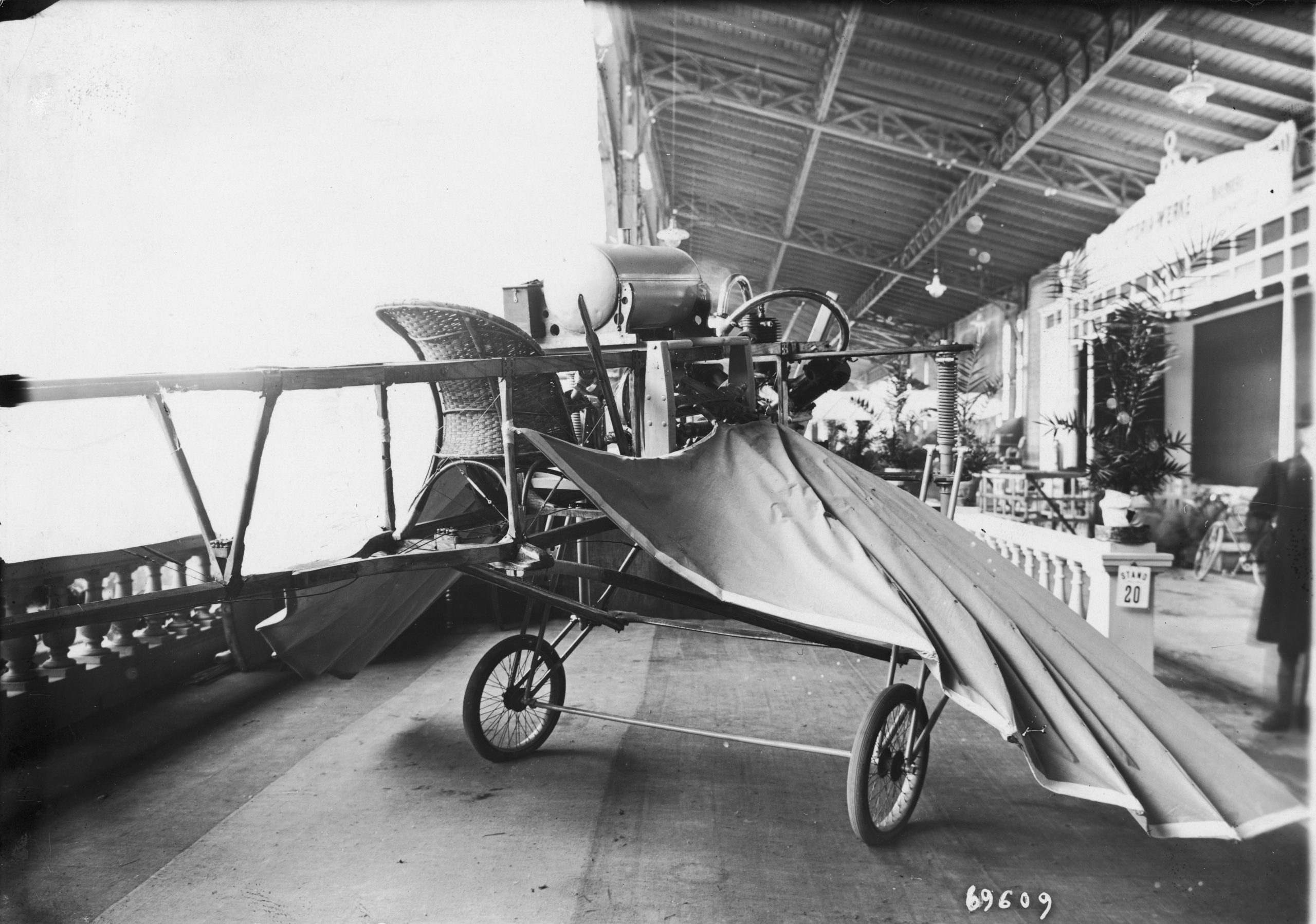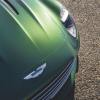
Do ‘Dune’ Ornithopters Exist In Real Life?
Article Highlights for Dune ornithopters in real life
- Dune features futurist flying aircraft powered by flapping wings
- Aviation pioneers have pursued ornithopters for centuries
- Two recent ornithopter prototypes finally took flight
In the new Dune movie, the main characters use a type of airplane with flapping wings. This vehicle is called an Ornithopter. Flying car prototypes are all over the news. So you might think Ornithopters are common as well. In truth, such an aircraft has been the holy grail of aviation, pursued by inventors for centuries. Therefore, the Dune ornithopters were all non-flying prototypes. But recently, a Canadian teams built two Ornithopters that flew successfully.
The ‘Dune’ ornithopters are non-flying props

Ornithopters are a central element of the Dune books and movie adaptations. This is because the members of House Atreides use these vertical takeoff and landing machines to explore the world of Dune.
The filmmakers built several non-flying prop ornithopters to shoot the movie. But first Director Denis Villeneuve instructed the team to base them on dragonflies while still making the military vehicles appear “muscular.” As a result, the aircraft look like part helicopter gunship, party huge insect.
If you watched the Dune movie, you might find yourself daydreaming of flying your own ornithopter. Someday soon, these science-fiction vehicles may be reality.
Ornithopters throughout history

Early aviation inventors based their flying machines on birds. For this reason, the ornithopter was one of the first designs attempted. Several pioneers throughout history–including Leonardo Da Vinci–puzzled over how to build human-powered Ornithopters.
By the 1800s, rubber bands made flying models with flapping wings possible. Then, in 1890, Gustave Trouve built a gunpowder-propelled ornithopter that was able to take off briefly. Later, model builders began exploring miniature remote-controlled, electric ornithopters. That said, ornithopters larger than the birds they imitate are rare. Until recently, ornithopters carrying a pilot were considered impossible.
Engineers pursued ornithopter technology relentlessly. This is because aircraft powered by flapping wings would be capable of taking off and landing vertically. In addition, the dune ornithopter would be highly maneuverable than a prop plane and faster than a helicopter. Perhaps it would even be more efficient at lower speeds.
Furthermore, a helicopter engine failure almost always results in a crash. But an ornithopter with an engine failure could, theoretically, lock its wings in place and glide like a plane.
Working ornithopter prototypes, next stop ‘Dune’

Several flying car prototypes make headlines each year. In addition, cities are pre-ordering automated air taxis. Understandably, Dune fans may hope ornithopters are on the horizon as well.
Inventors still pursue ornithopter technology. Modern teams have the advantage of lightweight, modern materials. Therefore, two Canadian ornithopters have achieved flight with a pilot aboard. An engine powers one prototype. A pedaling pilot powers the other.
James DeLaurier teaches at the University of Toronto Institute for Aerospace Studies (UTIAS). He is a pioneer of powered ornithopters. His prototype is the UTIAS Ornithopter Number 1 (nicknamed Mr. Bill). It was the world’s first remotely piloted vehicle powered by wing-flapping alone. Since then, DeLaurier completed a piloted test. Consequently, he achieved a 14 second, 300-meter flight with assistance from a jet turbine. Mr. Bill is a 710-pound craft. It has a 42-foot wingspan.
In 2010, UTIAT achieved another ornithopter first. First, a group of students built a lightweight ornithopter named “Snowbird.” It has has a wingspan of 105 feet and weighs just 32 pounds. Then, Todd Reichert piloted the pedal-craft for a record-breaking run of 19.3 seconds. Next stop? Dune!



